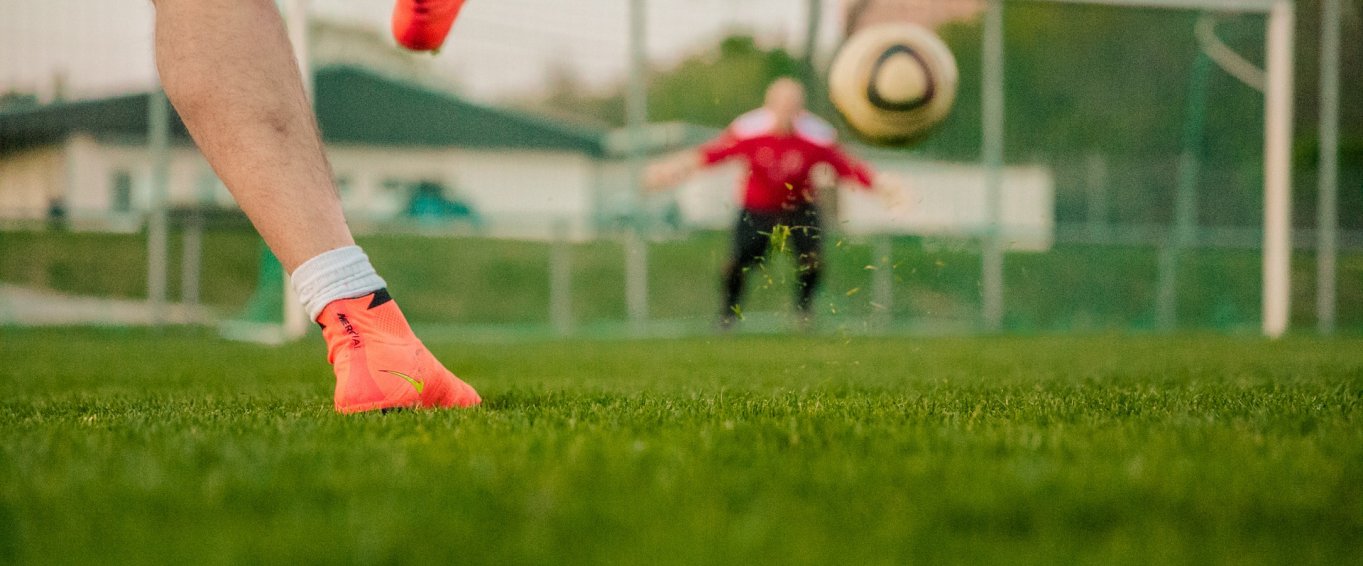Try These PE Football Games to Unlock Your Inner Messi!

Did you know football was invented in China in 476 BC? Or that the largest football stadium in the world is in North Korea? We bet you're less surprised to hear football is the most watched and played sport on earth.
It's hardly difficult to see why. Football is a great way to get active. It requires little equipment. It's easy to learn and, with practice, players can develop strong communication and interpersonal skills. Whether you love or hate it, whether you call it football, soccer or something else, it's the world's favourite. So, we think all children should get a chance to play.
Try these fun football games in your next PE class to get pupils excited about the beautiful game!
1. Sharp Shooters
How to Play: Divide pupils into two teams - shooters and goalies. If there's an odd number, one pupil will need to shoot and/or play goalie twice. Only two goalies can occupy the goal box at any one time. When a shooter scores, they must tag and swap with two new goalies.
Instruct shooters to form two lines on the edge of the penalty box. It is the coach's job to kick balls into play (left and right) for shooters waiting to run forward. The aim of the game is to score as many times as possible in the allotted timeframe (1-3 minutes). After shooting, players rejoin the line and wait for another turn.
If your balls run out, stop the clock and reset them. When time is up, the teams should switch roles. Focus on shooting technique and attacking the goal with confidence. Encourage goalkeepers to use courage and creativity when shot stopping.
Progressions:
-
Use the first touch rule: shoot as soon as you get the ball
-
Position shooters further back so they have to run into the penalty box to shoot
-
Try playing one goalie against two shooters (or vice versa)
-
Have two shooters attack diagonally and cross one another to reach the box
2. Search and Destroy
How to Play: Divide pupils into teams of four - half are defenders, half are destroyers. The defensive target is a ball placed atop a cone in the centre of your pitch. As this is a no contact game, defenders may only obstruct and deflect. They may not tackle attacking players. If they intercept the ball, they must kick it out of play.
Each attacker should have their own ball and keep their head up to avoid colliding with other players. They score a point every time they knock the ball from the cone and 'destroy' the target. When this happens, stop the clock and allow the defenders to move the target to a new position.
Give the attacking team 3-4 minutes to score as many points as possible. If a ball is kicked out of play, they must retrieve and it and dribble it back towards the action. They cannot kick it in from the touchline. When time is up, instruct the teams to switch roles.
Progressions:
-
Add more targets for defenders to protect
-
Keep the clock running when defenders are moving the target
3. Wham! Blam! Slam!
How to Play: You need a wall that's solid enough to kick against for this game. It requires minimal set up so it is suitable for use as a warm up activity. Take two cones, two jumpers or any equipment that's to hand and create a goal in the centre.
Assign pupils to pairs. Pairs have three 'lives' each and compete against one another. The first player kicks the ball into the goal. As it rebounds, the second player must kick it back into the goal. The players repeat this until one of them misses a goal, lets the ball stop moving or gets hit by a rebound. When this happens, the offending player loses a life.
When a player's lives are up, their opponent is declared the winner and the next pair begins. To speed the game up, just reduce the number of lives.
Progressions:
-
Make the target goal smaller
-
Have players kick from further away
4. Scamper and Score
How to Play: Using cones, set up three small goals at one end of your pitch. Divide pupils into teams of four. If you have coloured bibs, use them to differentiate attackers from defenders. With one ball in play, attackers must score by shooting through any of the goals. However, they may only shoot at a goal while it is undefended.
The coach (or another pupil) should attempt to defend all three goals. When they are stood behind a goal, it cannot be attacked. The defending team should block, deflect, obstruct and intercept to stop attackers from scoring. When the attacking team has scored three goals, stop the game and allow two more teams to start play.
The goalkeeper must be prepared to move quickly and defend all three goals. We promise pupils will have lots of fun watching their coach scampering between the cones!
Progressions:
-
Make the goals smaller
-
Increase the number of goals
- Add a second ball to the field
-
Have two teams playing (attacking and defending) at the same time (with goals at either end of the pitch)
Read our blog on the science of being sporty to find out why playing football makes kids clever!





